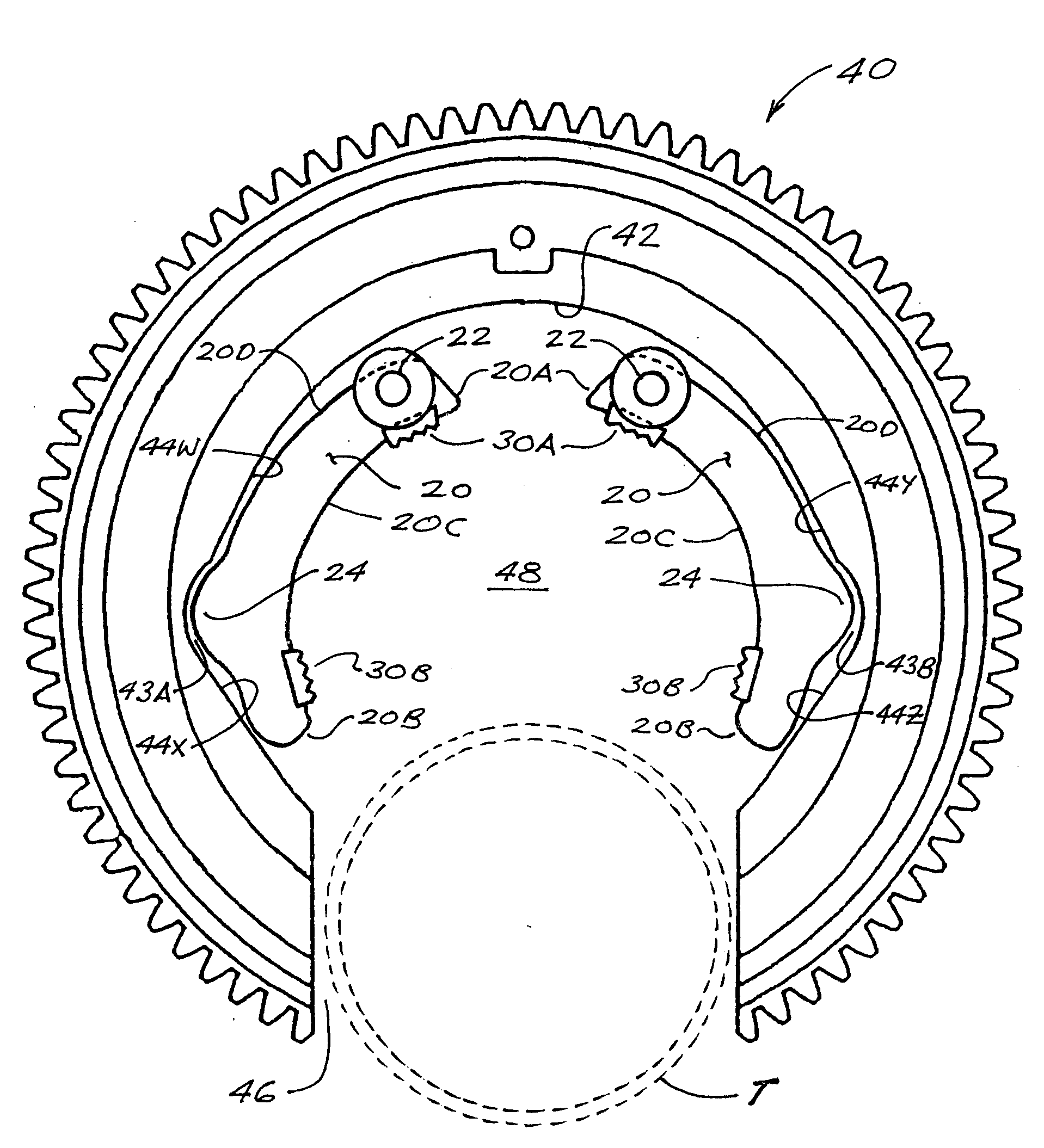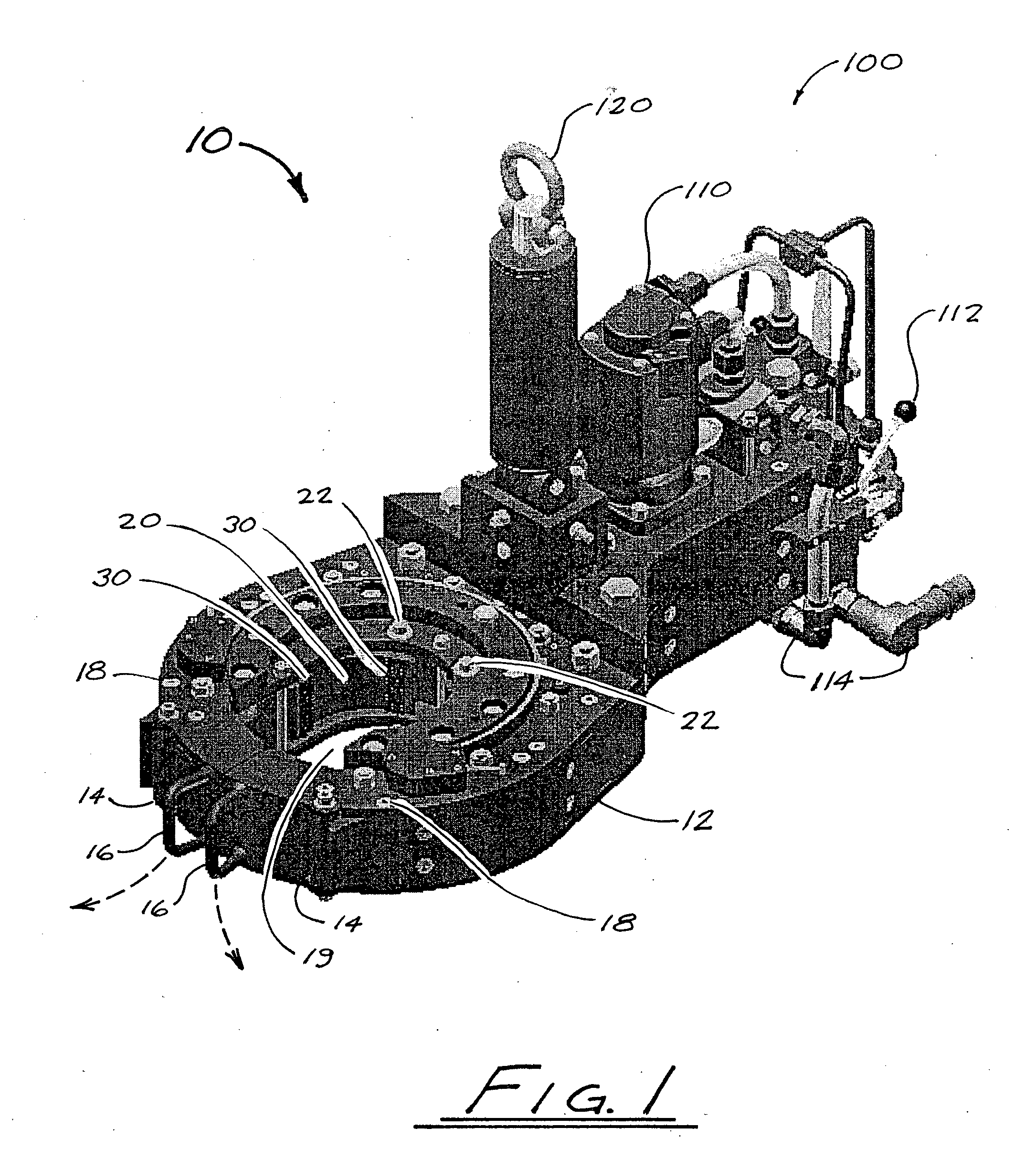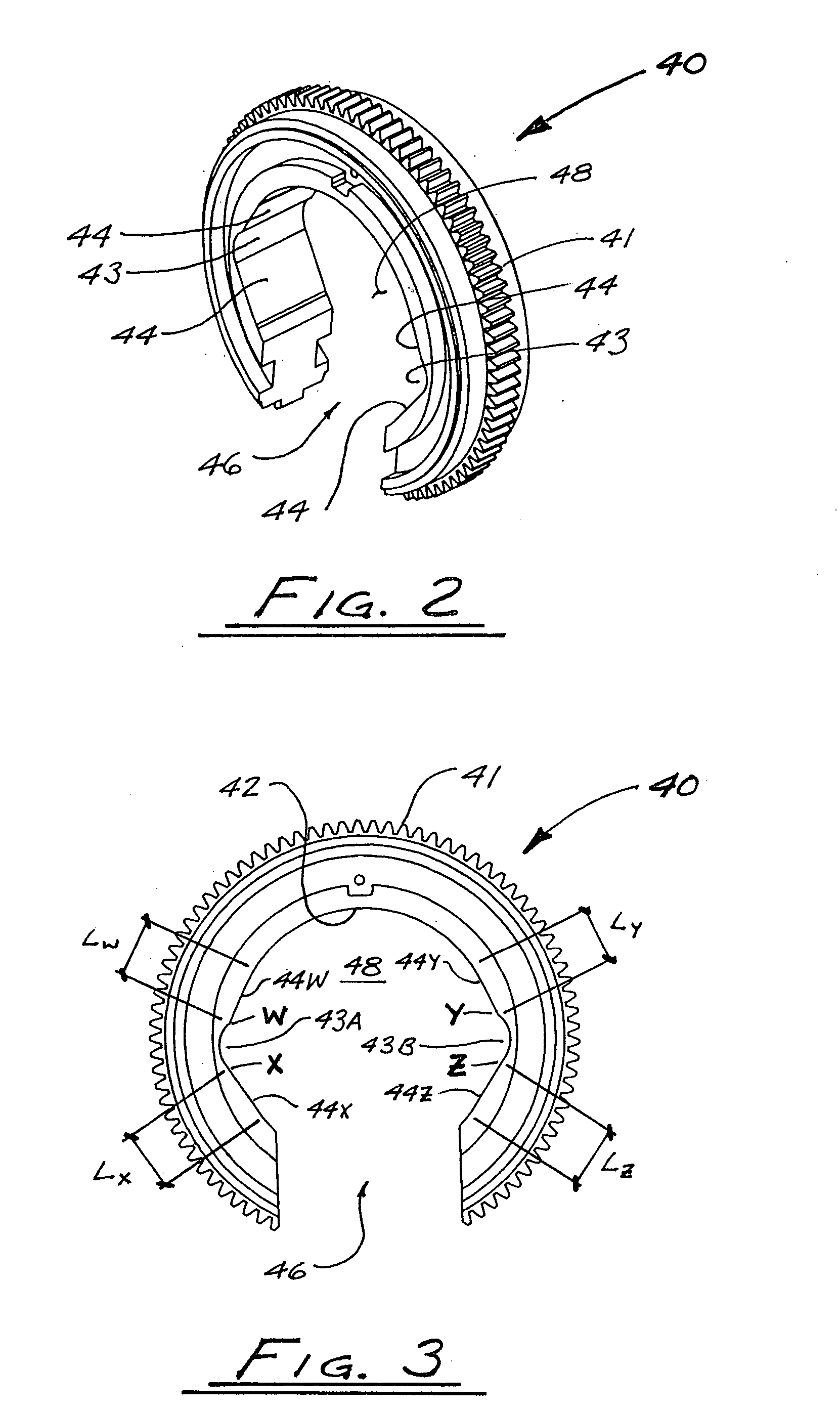Power tong with linear camming surfaces
a technology of power tongs and camming surfaces, which is applied in the direction of wrenches, spanners, drilling accessories, etc., can solve the problems of reducing the gripping force applied to the tubular, wear to the components, and certain amount of “play” in the mechanism, so as to increase the distance, increase the force, and the radial distance to a point
- Summary
- Abstract
- Description
- Claims
- Application Information
AI Technical Summary
Benefits of technology
Problems solved by technology
Method used
Image
Examples
Embodiment Construction
[0037]FIG. 1 generally illustrates an assembled power tong 10 in accordance with one embodiment of the present invention. With the exception of the configuration of the camming surfaces of the rotary gear (which is not visible in FIG. 1), the construction of power tong 10 is largely similar to known power tongs. A generally-C-shaped gear housing 12 has doors 14 which can be swung open about hinge points 18 using handles 16 (as indicated by the broken arrows in FIG. 1) so as to provide an opening into a central space 19 within gear housing 12. A pair of jaw members 20 (typically of generally arcuate shape) are pivotably mounted within gear housing 12. As shown in FIG. 5, each jaw member 20 has a pivot end 20A, a free end 20B, an inner side 20C disposed toward central space 19, and an outer side 20D. The pivot end 20A of each jaw member 20 is pivotably mounted to gear housing 12 by means of a pivot pin 22, at a point opposite the opening into central space 19. Dies 30, for grippingly ...
PUM
 Login to View More
Login to View More Abstract
Description
Claims
Application Information
 Login to View More
Login to View More - R&D
- Intellectual Property
- Life Sciences
- Materials
- Tech Scout
- Unparalleled Data Quality
- Higher Quality Content
- 60% Fewer Hallucinations
Browse by: Latest US Patents, China's latest patents, Technical Efficacy Thesaurus, Application Domain, Technology Topic, Popular Technical Reports.
© 2025 PatSnap. All rights reserved.Legal|Privacy policy|Modern Slavery Act Transparency Statement|Sitemap|About US| Contact US: help@patsnap.com



